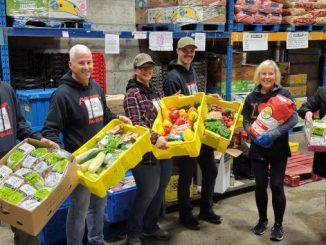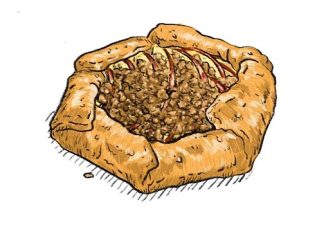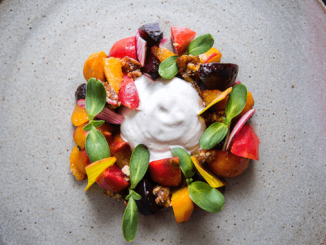For over thirty years, Oyama Sausage Co has been serving Vancouver sausage and other charcuterie staples. They can be found in the Granville Island Public Market and there is usually a line because great minds think alike. In fact, it is with fondness that I look back on the many hours, if not days, that I have spent in line at Oyama sausage over the years. There is a camaraderie amongst Oyama customers. It feels like a club where everyone shares the same excellent taste.
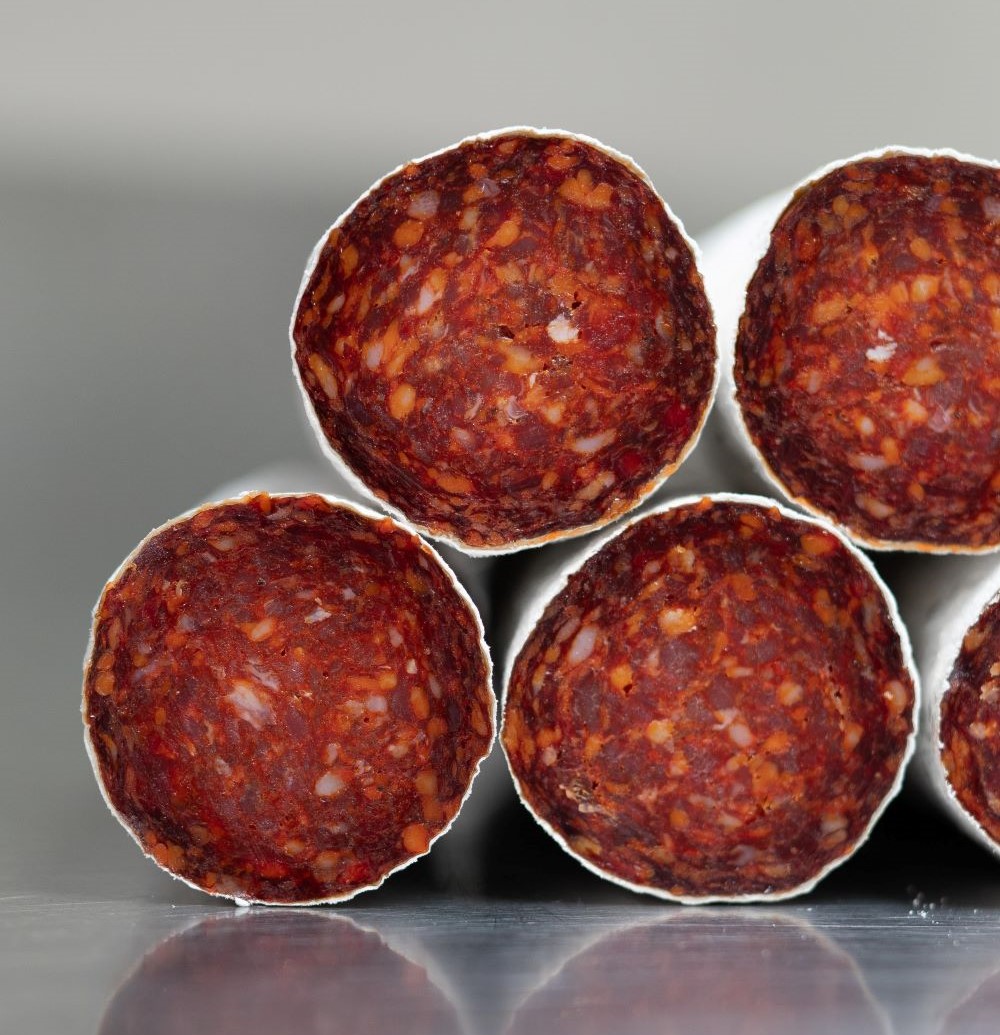
Great Minds Think Alike
I’ve long loved Oyama’s charcuterie and sausages. I do believe they are the best in town at what they do. They’ve ruined grocery store breakfast sausages for me. Their superb Jambon Des Aimes makes a perfect ham and brie sandwich. I’m not alone in my admiration of them. A number of local restaurants source from them. I’ve also heard Vancouverites who have moved elsewhere in BC have encouraged nearby businesses to stock Oyama products.
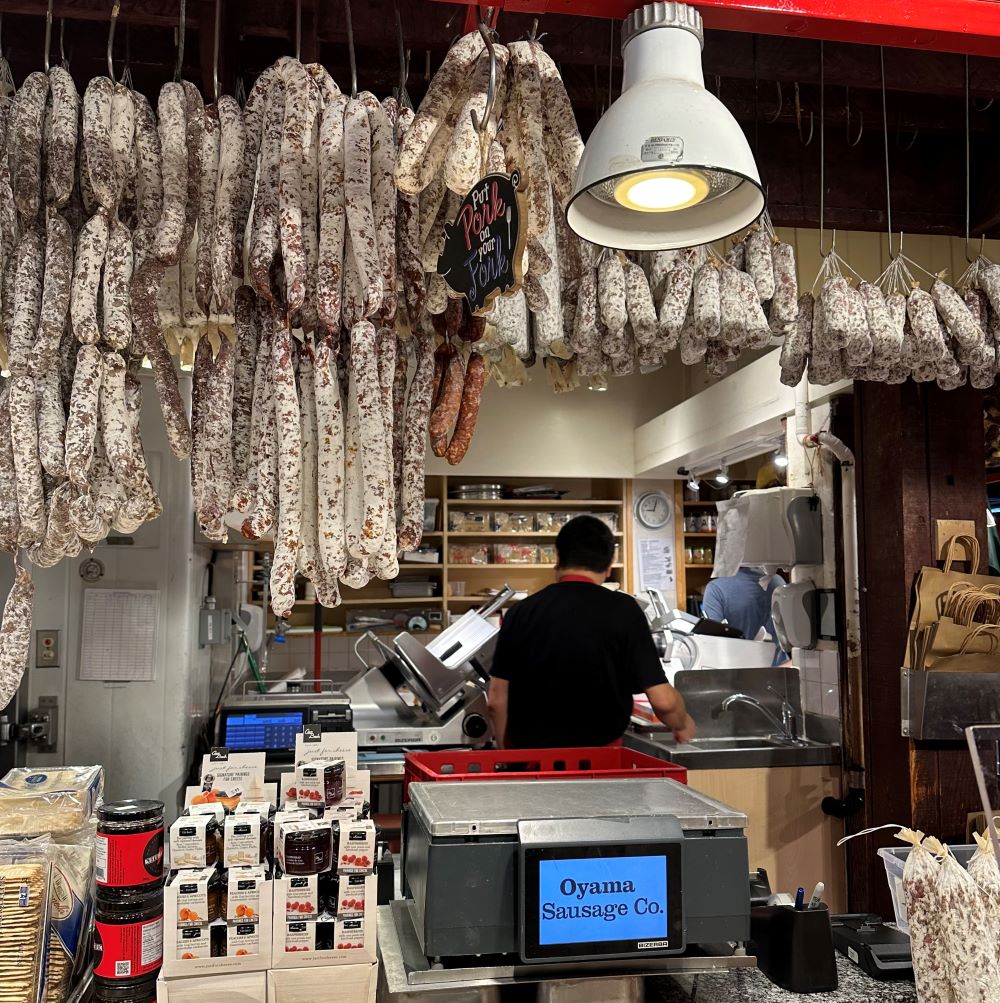
Where the Oyama Sausage is Made
After a tour of their facility, which is tucked under the Oak Street Bridge, right on the edge of the Fraser River, I understand why what they make is of such high quality. Despite the impression given by their nearly overflowing display case in Granville Island, Oyama is still a fairly small, hands-on, artisanal operation. For example, they still write their recipes on index cards.
The company was first started by John and Christine van der Lieck over 30 years ago in Oyama, BC, hence the name. They first opened the retail space in the Granville Island Public Market in 2001. The initial recipes were developed by John. He is still a resource who is available to answer questions and queries from the team but Chris Halsey-Brandt and Gero Kohler took over in January of 2016. Gero is the production manager and he originally joined Oyama in September 2010.
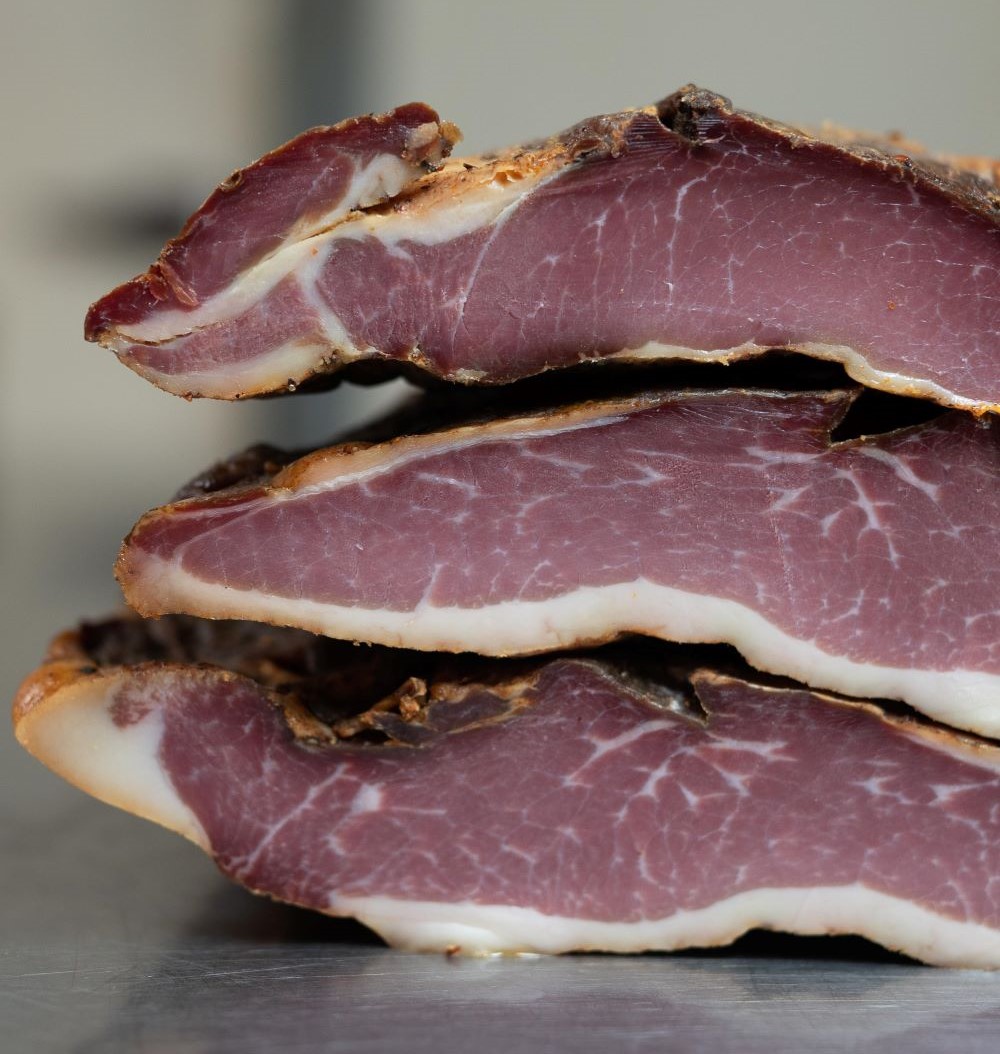
Hands On Quality Control
To give you an idea of how small an operation Oyama is, they have only just had to upgrade their labelling system. Previously, different coloured strings were tied to the ends of different salamis. As the selection of offerings expanded, this colour coding system was challenged by just how many different kinds of salami were being made. Recently more conventional tags with written names have been employed.
The process of making and aging salami is at once instinctive and meticulous. As humidity changes throughout the year, as the weather shifts, adjustments need to be made in the salami aging room. Just as a good BBQ chef can judge temperatures by the sounds of their fire, Halsey-Brandt and his team can assess that the salami is aging well just by smell. And speaking of smell, the most intoxicating aroma of my Oyama tour was found in the prosciutto aging room. Whole pork legs hang from the ceiling, rubbed all over with fat to seal in the flavour. It was impressive to see that the products I’ve savoured over the years are all made diligently and carefully in-house.
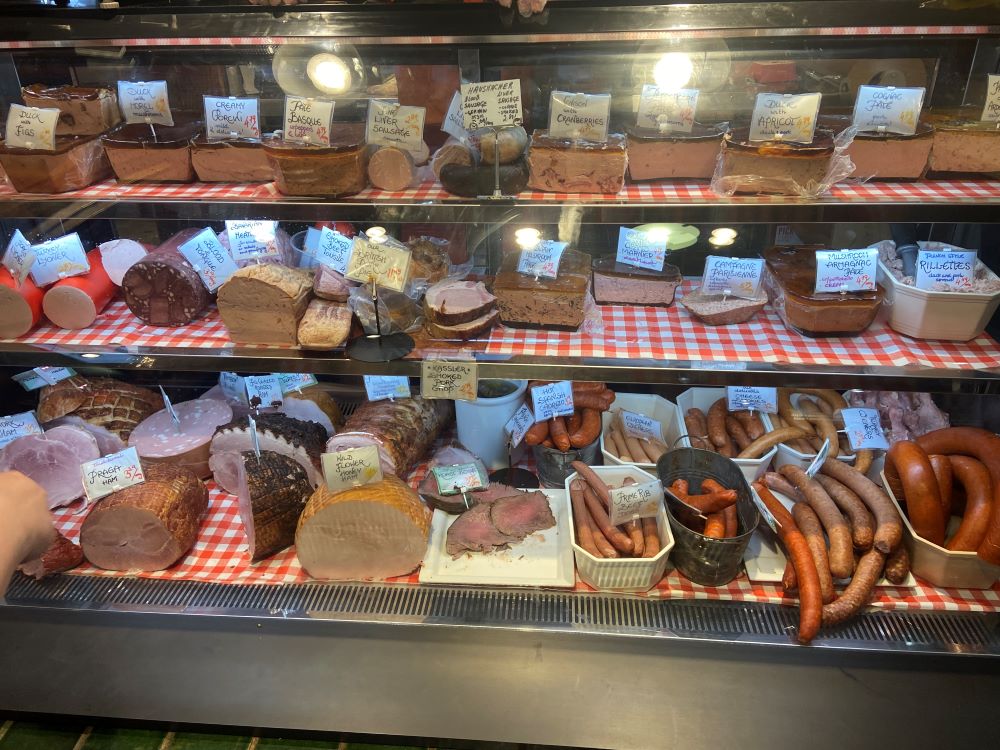
From Classics to New Innovations
While Oyama is a trusted go-to for classics like Saucisson, Andouille, and Boudin Noir, they also enjoy experimenting. Flavours change seasonally and the team is constantly innovating new recipes. A relatively new flavour is the Chorizo Verde. As well as being available at Oyama’s Granville Island Market location, this sausage is also on the menu at Alimentaria. The dish is aptly named Green Chorizo and Potatoes. Oyama’s chorizo is cooked with fingerling potatoes imparting all of its spiced tomatillo flavour. Then the dish is finished with spicy salsa macha and feta cheese. I personally love to use the Chorizo Verde in breakfast burritos. But that is only one of Oyama’s many sausages.
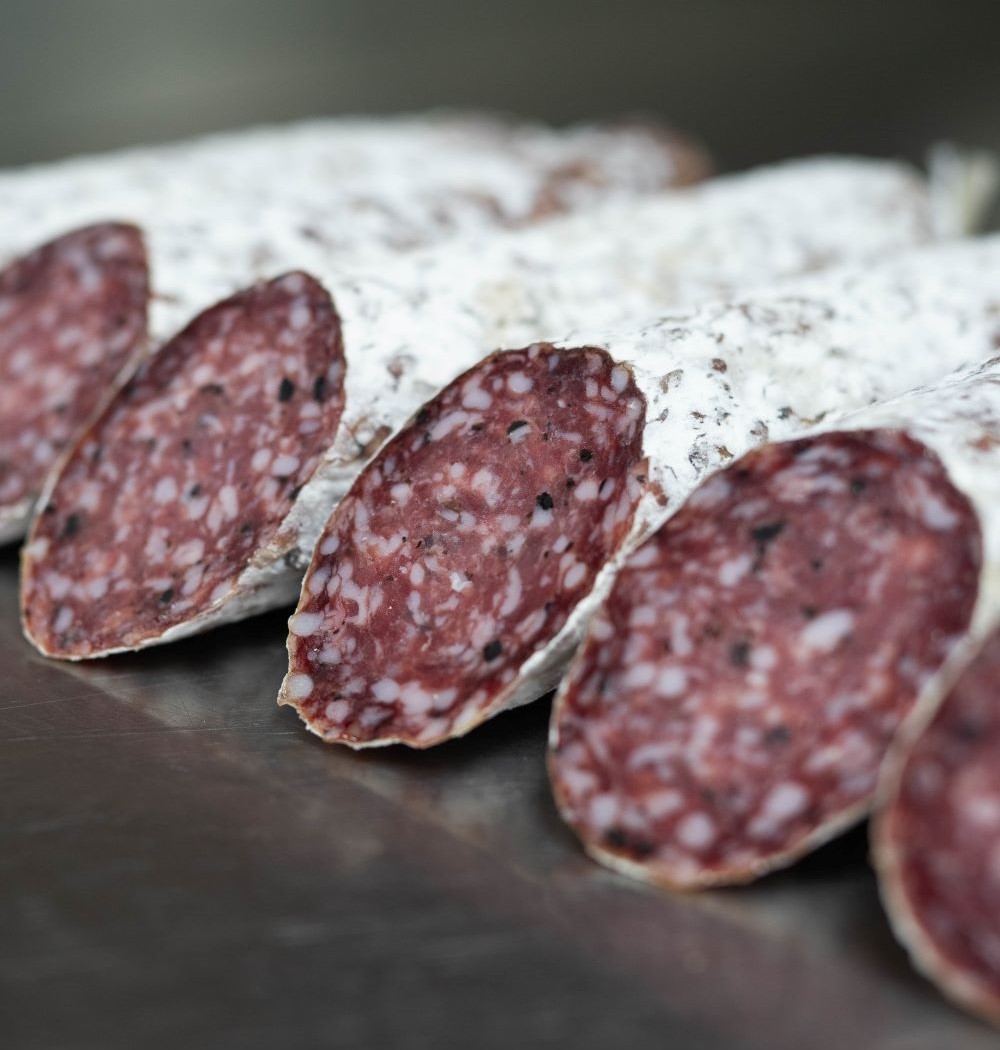
There are also Maple Breakfast Sausages made using real Canadian maple syrup. Their roast beef is always perfectly medium rare, and the prices of Oyama’s deli meats are barely more than what you would pay at the grocery store. This is deliberate, and Halsey-Brandt notes that he prioritizes affordability. Indeed the quality product you receive for the price is impressive. It is probably why those who have left the Lower Mainland have asked local butchers and grocers around BC to source Oyama products.
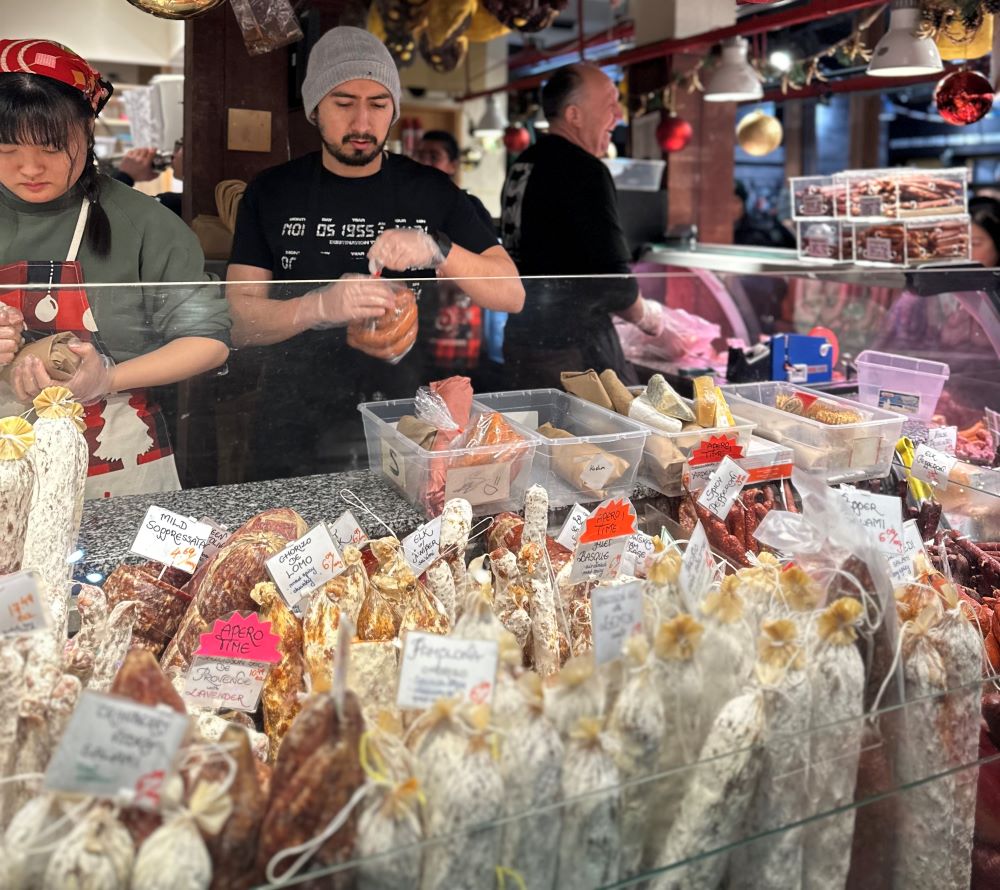
As a loyal Oyama customer, I have worked my way through the majority of their offerings but there are still items I have yet to taste. For a relatively small operation, their output is impressive. It gives customers reason to revisit, not just to buy their favourites again but to try something new and different. Oyama is open from 9am to 6pm seven days a week in the Granville Island Public Market.


